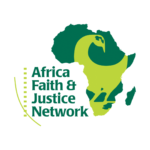Last year, the people of Somalia caught a glimpse of tranquility. It was fleeting and certainly not without its violent interruptions, but the few months of rule under the Union of Islamic Courts (UIC) is now being called Somalia’s ‘golden era’ by top United Nations officials.
In recent weeks, the area around Mogadishu has collapsed into a bloodbath that has resulted in the displacement of an estimated 90,000 individuals, on top of the tens of thousands who had already fled their homes. Famine is likely and disease and malnourishment
plague the streets. Indeed we may wonder how the ‘golden era’ so quickly disappeared.
The United States’ role in Somalia has been limited since the deaths of 18 soldiers in Mogadishu in 1993. Fearing a public outcry, the Bush Administration has been reluctant to get involved in Somalia, despite its alleged breeding ground for terrorism. But when the UIC took over in the summer of last year, the United States once again saw reason for military involvement in the Horn of Africa.
Though the Islamists brought a semblance of normalcy to Mogadishu – the airport re-opened, basic needs were generally provided for – their status as an extremist movement prompted the United States to label the UIC a terrorist organization with ties to Al-Qaeda.
Despite a growing influence of the UIC around Mogadishu and the southern part of Somalia, the Transitional Federal Government (supported by the United States) remained based in Baidoa, led by Prime Minister Ali Mohammed Ghedi. It was clear that Ghedi would be incapable of countering the UIC movement in the south without help from his international partners.
Then in December of 2006, the UIC declared a holy war against Ethiopia which prompted a quick reaction from the Ethiopian government, an ally in America’s war on terror. Utilizing American planes, American satellite technology and American artillery, Ethiopia launched an attack on Somalia. The United States also pursued its own attacks against al-Qaeda targets in 2007.
Now, months later, experts estimate it would take at least 20,000 peacekeeping troops to stabilize the area around Mogadishu. The African Union managed to pledge 8,000, only 1,600 of whom have arrived, all Ugandan. On top of the fighting, Somalia is now facing the worst crop cycle of the last decade. Thus, with violence and hunger mounting, the United Nations has termed the situation in Somalia the worst humanitarian catastrophe on the continent – more severe than the conditions in Darfur.
American involvement in this Somali conflict is far from benign and as an organization which promotes a more just foreign policy in Africa, AFJN is calling on all stakeholders to tend to the immediate needs of the Somali people. Those who have been displaced, those
whose crops have dried up, and those who do not have access to their most basic needs are deserving of immediate aid from the international community.
The people of Somalia have seen their ‘golden era’ come and go on the determination of US-backed Ethiopian forces and a US-backed
transitional government. The UIC was not a terribly legitimate government, it was accused of committing human rights violations, and it was certainly not democratic, but the stability it brought to Mogadishu has gone unparalleled under the Transitional Federal Government. It is unlikely that the UIC could have maintained such stability in the long run, but they were scarcely given the chance. As one displaced Somali man said in a recent New York Times article, “we want the Islamists back… at least we had food.”
